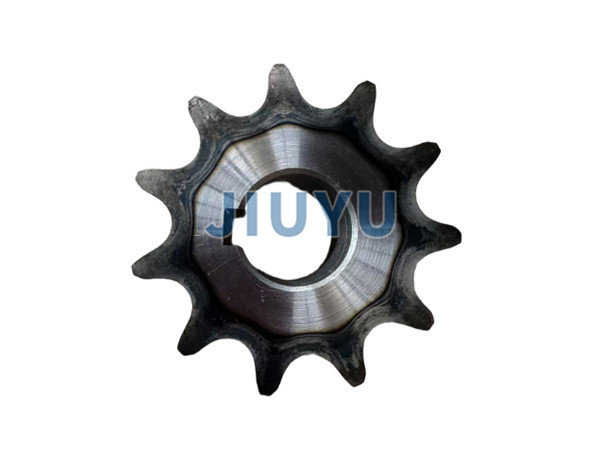
12B industrial sprocket is a type of sprocket used for industrial transmission, belonging to the standard sprocket series. Here are some introductions about it:
Specification Parameters
Tooth Size: 12B industrial sprockets with different numbers of teeth have different tooth sizes.
. For example, the 12B11 sprocket has 11 teeth and a pitch diameter of 67.62mm; The 12B12 sprocket has 12 teeth and a pitch diameter of 73.60mm, and so on. As the number of teeth increases, the pitch diameter gradually increasesAperture size: There are various specifications for the aperture of the 12B industrial sprocket. The standard aperture of the 12B11 sprocket is 12mm, and larger apertures can reach 32mm; The standard aperture of the 12B16 sprocket is 16mm, and the larger aperture is 50mm, etc. Different application scenarios and installation requirements can choose sprockets with different apertures
Wheel size: Taking the B-hub sprocket of the 12B series as an example, there are corresponding size regulations for the diameter and length of the wheel hub. The hub diameter of the 12B11 sprocket is 47mm and the length is 35mm; The hub diameter of the 12B20 sprocket is 90mm, and the length is 35mm, etc
Features
Suitable precision: manufactured according to ISO, DIN, and BS 228/3 standards, with high precision, it can protect good meshing with the chain and achieve accurate transmission.
Excellent material quality: Usually made of high-quality carbon steel, stainless steel, or alloy steel, and subjected to heat treatment processes such as quenching and tempering, it has high strength, performance, and fatigue resistance (based on actual reports), can withstand large transmission loads, and is suitable for various harsh working environments Good interchangeability: As standard components, the 12B industrial sprockets produced by different manufacturers have good consistency in size and accuracy, with strong interchangeability and easy maintenance and replacementApplication Industry
Conveyor Equipment: Used on conveyor lines in industries such as food, beverage, chemical, and building materials to drive chains and move items forward, such as belt conveyors, scraper conveyors, etc.
Lifting equipment: such as mining hoists, material hoists in construction, etc., achieve the lifting and lowering of heavy objects through the coordination of sprockets and chains Textile machinery: Used in equipment such as carding machines and drawing machines in textile factories to drive chains and drive various components to work together Agricultural machinery: such as harvesters, rice transplanters, etc., the 12B industrial sprocket can transmit the power of the engine to various working components, achieving normal operation of the machinery


